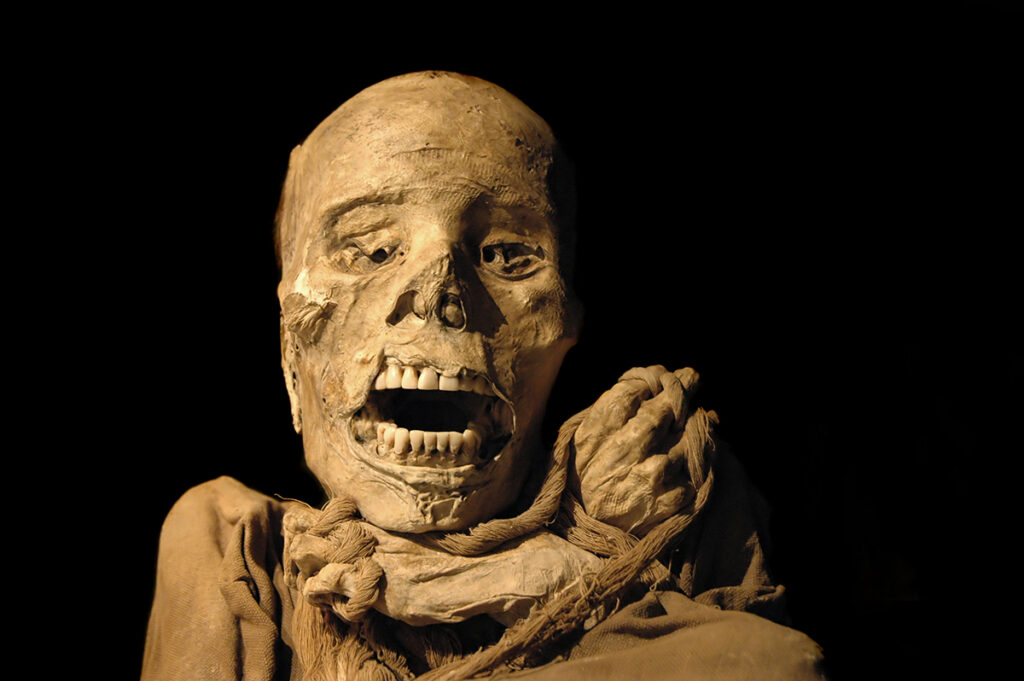A remarkable discovery has emerged from the study of 1,200-year-old mummies in Peru, revealing intricately detailed tattoos etched onto the preserved skin of individuals from the Chancay culture. This pre-Hispanic civilization, which thrived along the coastal region of present-day Peru, left behind more than just pottery and textiles—their artistic mastery extended to the human body itself.
Unveiling the Hidden Ink
For centuries, the faded tattoos on Chancay mummies have intrigued researchers, yet only now has their full complexity been revealed. A team of researchers from Hong Kong’s Chinese University applied laser-stimulated fluorescence (LSF) technology to analyze the remains. This cutting-edge technique produced high-contrast fluorescence images of the preserved skin, unveiling an unprecedented level of precision in the ancient tattoos.
These tattoos feature geometric patterns, with triangular shapes being the most common motif. Some designs also include animal figures, hinting at a symbolic or ritualistic significance. The study found that the fine-line tattoos measured as narrow as 0.1 to 0.2 millimeters, surpassing the precision of even modern tattooing techniques.
A Tradition of Precision and Skill
The method used to create these tattoos likely involved tapping ink into the skin with sharp tools such as cactus needles or animal bones. The meticulous level of craftsmanship suggests that tattooing was a refined art among the Chancay people, demanding skill, patience, and specialized knowledge.
Despite the extensive study of over 100 mummified individuals, only a select few bore these highly detailed tattoos. This rarity indicates that such body art was reserved for an elite group within the Chancay society, possibly individuals of higher social standing or those involved in special ceremonies and rituals. The time and effort required to produce these elaborate designs further support the idea that they carried significant cultural meaning beyond mere decoration.
A Link to Chancay Art and Trade
The Chancay civilization is widely recognized for its pottery and textiles, which were distributed through extensive trade networks across the region. Interestingly, the geometric patterns found in these art forms closely resemble the tattoos discovered on the mummies. However, the body art appears to be even more detailed and ornate, reinforcing the idea that tattooing was an important and prestigious form of artistic expression.
This discovery provides new insights into the artistic sophistication and societal structure of the Chancay culture. By combining archaeology with modern imaging technology, researchers continue to uncover the hidden history embedded in ancient civilizations. As further studies explore the purpose and symbolism of these tattoos, the findings could reshape our understanding of body art in pre-Hispanic cultures, highlighting its role not just as decoration, but as a marker of identity, status, and tradition.


